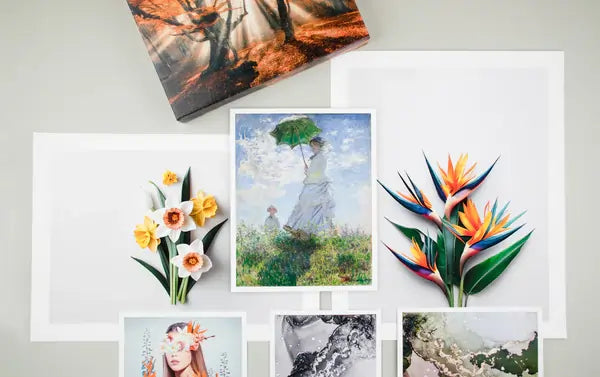Biography
Artist, world traveler, former lawyer, and amateur historian. Thomas has been called “a man of many talents”, but art has always been his driving passion. Drawing and painting since childhood, Thomas shifted from primarily acrylic and watercolors to oils in 2020 and immediately fell in love with the medium. His original oil paintings are inspired by the beauty in the world, the humor in the mundane, how light dances and interacts with objects, and landscapes of places which spring emotion and memory in the viewer.

Interview
Can you tell us a bit about your journey as an artist? What sparked your interest in art?
“I’ve been drawing and painting since I was a kid, but my serious journey started when I decided to quit my previous career and focus on making artwork full-time. I’m beyond grateful that I am in a position where I can do what makes me happy. For me, it was primarily about accepting what I wanted to do with my life and completely disregarding what anyone else thought about it - possibly good advice for anyone in general.”
Who are your biggest artistic influences, and how have they shaped your work?
“Definitely some local artists here in Utah, Glenn Dean and Bryan Mark Taylor. Plein air work has been really inspiring and has motivated me to get better at my landscapes.”

Could you describe your creative process? How do you typically begin a new piece?
“First, I’ll come up with an idea and visualize the finished product in my mind. Then I’ll sketch it out to establish composition and values, finally moving to the canvas where I work in layers, starting with the underpainting.”
What are some key tools or materials you use in your work and why are they important to you?
“I try not to add too many unnecessary extra materials to my work. A quality canvas, my paints, and brushes are really all I need, as each element serves its purpose and allows me to focus on what matters - making great art.”

What has been the most challenging project or phase in your career? How did you overcome it?
“Navigating the isolation of being an artist was really difficult at first. I overcame it by seeking out a community of like-minded artists and building relationships.”
Can you share a particularly memorable moment in your artistic career?
“The very first time I displayed my artwork in a public space I didn’t feel like anyone would appreciate my work. I was in absolute disbelief watching strangers marvel at my paintings and I even won an award that night. Wonderful experience.”

How do you balance the commercial aspects of being a professional artist with your creative process?
“I am very much still navigating that one. I do what I do because I love painting and making art, not because I’m a salesman or a marketer. The benefit to that is that I don’t lose focus of my main goals, the drawback its I really have to force myself to tackle the commercial angle.”
What advice would you give to artists trying to gain more exposure for their work?
“Apply to art markets. This gets your work in public and gets you in front of your prospective fans. I’m sure artists do great solely marketing their work online, but there is no substitute for getting people to see your work in person and meeting your audience.”

How important is community to your work as an artist? Are there any groups or networks you’re a part of?
“Community is extremely important; getting involved with community art associations has helped me establish relationships with other artists, set up public art installations, amplify local and new artists, and contribute to charitable organizations. I happily support my local cities’ art organizations, such as Millcreek Art Council and Holladay Arts, as well as community foundations like Art Access Utah.”

Have you collaborated with other artists or brands? What was that experience like?
“Not in any creative sense. I have artwork on display right now with three other talented artists with our artwork complementing each other for the show’s theme. Mostly, I’m just honored to have artwork hanging next to such great work.”
If you could change one thing about the art industry, what would it be?
“Perhaps not so much the industry, but society in general: there needs to be a renewed focus on teaching, appreciating, and making art. Creative expression and artistic endeavor is part of the basic human condition, and so often it is stifled, defunded, deprioritized - and now even outsourced to computer programs.”
How do you stay motivated and inspired to continue creating new work?
“Fortunately, finding motivation to make art is easy because I absolutely love it; if I ever feel that motivation waning, I’m perfectly comfortable taking a few days off to rest (although I find that I’m usually brainstorming new ideas or planning my next painting when I do.) Inspiration can be another story. My remedy if I can’t think of what my next painting to be is to go on a hike in the Wasatch mountains or buy a new exciting bottle of whiskey, and then start a new painting. Just putting paint to canvas can lead to inspiration.”

What upcoming projects are you excited about? Can you give us a sneak peek into what’s next for you?
“I just finished the biggest painting I’ve ever made at 30x40 inches, now I just have to get a bigger canvas and one-up myself once again. Other than that, I was accepted into my favorite art show next year so I’m producing a ton of work which I hope people enjoy.”
Where do you see your artistic journey taking you in the next five years?
“Mostly, I hope to keep improving my craft and honing my brushing skills. But honestly, in the next five years, I’m looking to keep doing what I’m doing now. I certainly hope to get in more gallery shows so my work is on display year-round and to continue to get into larger and more prestigious art shows - perhaps even regional markets. I’m super happy with my journey’s trajectory, and I’m very much looking forward to where it takes me.”

How has working with The Stackhouse Printery impacted your work or opened new opportunities for you?
“Before I started working with The Stackhouse Printery, I went through a number of disappointing printers. The Stackhouse Printery has exactly the products I need and, most importantly, the quality that can do justice to my artwork. Being able to have high-quality prints available at art markets has greatly expanded my audience and represents a large proportion of my sales.”
What do you think about the role of technology, like high-quality art printing, in today’s art world?
“Fundamentally, art is meant to be observed and appreciated. Not everyone has the space to hang art, the time or ability to visit a gallery, or the funds to buy original artwork. High-quality art printing democratizes art appreciation by allowing more people to access artwork without compromising the artist’s vision.”

https://www.thomasembleyart.com




